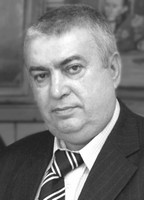Practical methods to improve military personnel physical fitness rating tests
Фотографии:
ˑ:
Teoriya i praktika fizicheskoy kultury №11 2017, pp.62-64
Dr.Hab., Professor R.M. Kadyrov1
PhD, Professor V.D. Getman1
1St. Petersburg State University of Architecture and Civil Engineering, St. Petersburg
The study reports practical modern methods to improve military personnel physical fitness rating tests by special exercises included in the standard test set and differentiation of test standards in the military exercises widely applied by the Armed Forces of the Russian Federation, with the test scores classified into excellent, good and satisfactory levels.
Subject to experiment under the study were first-year cadets of military education establishments, with the physical fitness being tested using the standard progress rating test exercises as provided by the Armed Force Personnel Physical Training Regulation (PTR-2009). Body weight rates, РWC170 were generated by the commonly accepted methods followed by the maximal oxygen demand (MOD) rate calculations. The subjects’ sport fitness was rated by the applied military sport exercises. The study data and analysis helped demonstrate correlations of the goals, missions and tests to rate physical fitness on the whole and the military personnel physical fitness in particular and offer ways to improve the valid test system, expand the range of anthropometrics and functionality test rates to effectively rate the sport-specific and physical fitness.
Keywords: test set, point scoring system, physical fitness.
References
- Weidner-Dubrovin L.A., Jamgarov T.T., Korobkov A.V. et al. Voprosy nauchnogo obosnovaniya fizicheskoy podgotovki v Vooruzhennykh Silakh SSSR [Issues of scientific substantiation of physical training in the Armed Forces of the USSR]. Leningrad: P.F. Lesgaft VKFFK i S pri GDOIFK publ.,1964, pp. 25-36.
- Kadyrov R.M., Mikhail I.I., Getman V.D. Model postroeniya fizicheskoy podgotovki [Зhysical training building ьщвуд]. Aktualnye problemy fizicheskoy i spetsialnoy podgotovki silovykh struktur, 2010, no. 2, pp. 25-29.
- Kadyrov R.M., Mikhail I.I. Modelirovanie objema i intensivnosti nagruzok v protsesse fizicheskoy trenirovki [Physical load volume and intensity modelling in training process]. Teoriya i praktika fiz. kultury, 2016, no. 8, pp. 72-75.
- Nastavlenie po fizicheskoy podgotovke v Vooruzhennykh Silaлh Rossiyskoy Federatsii (NFP-2009) [Manual on physical training in the Armed Forces of the Russian Federation (NFP-2009)]. Moscow: Voenizdat publ., 2009, 200 p.



 Журнал "THEORY AND PRACTICE
Журнал "THEORY AND PRACTICE